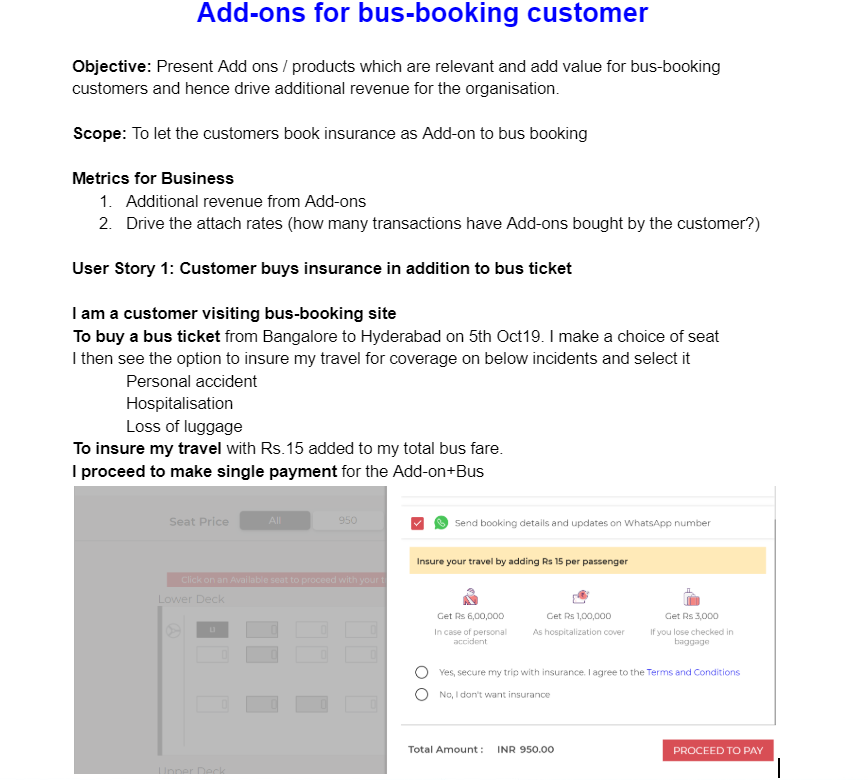Pointers on writing the perfect PRD doc
Oct 14, 2021 . 4 min read . 70 views
PRD or the Product Requirements Document is a living document that helps different stakeholders understand and align on the status and purpose of the product.

Good PMs keep the PRD up-to-date on a daily/weekly basis. A PRD is never complete. It evolves as the team iterates.
Four Core Sections in a PRD
- Define the product vision and purpose
- Describe the product features
- Outline the release criterion
- Identify risks/constraints and set a schedule
1. Define the product vision and purpose
-
Discuss user problems not solutions
-
Write the problem statement
-
Try to quantify the impact. Add a goal/focus metric.
- An example of a good problem statement looks like this:
- “Repeat user orders have dropped by XX% in the last Y months. We see that logins from repeat users have also dropped at the same rate.
- Based on the user study we did last week, we seem to believe that the current login flow is the main issue.”
- An example of a good problem statement looks like this:
-
Identify the target demographic and user persona
-
Identify the various use cases for the target demographic
-
Focus on Why?, Who cares?, and So What?
2. Describe the product features
- List down high-level product objectives
- Map features to product objectives
- Provide as much detail as possible to avoid ambiguity
- Adding process diagrams mocks, and extra data/research
- Add happy and unhappy flows
- Sample of a happy flow — “User clicks on submit. If the information is correct, redirect the user to the home page.”
- Unhappy flow: “User clicks on submit. If the information is incorrect, show the relevant error message.”
- Add Non Functional requirements
- Obscure requirements that are easy to miss
- e.g.The response time for the backend call that checks the validity of the input should not exceed XXX milliseconds.
- Add wireframes and designs
3. Outline the acceptance and launch criterion
- Establish the criteria for an acceptable version of the product that can be released
- Think of this as a checklist. If even one, if the item is not checked the feature, cannot be shipped.
- Areas to outline release criteria:
- Functionality: What are the absolute mandatory functions?
- Usability: User stories that the release needs to fulfil.
- Build a list of Business and Technical test cases
- e.g: Business test case: “Click on submit button with the incorrect username.”
- Acceptance criteria: “Clicking on the submit button with the incorrect username should show the relevant error message.”
- Build a list of Business and Technical test cases
- Reliability: What is the max acceptable failure rate?
- Performance: How fast it must be? Response times? etc.
- Supportability: Is it testable, serviceable, installable, and configurable?
4.Identify risks/constraints and set a schedule
- Identify potential risks and constraints
- Build a rough timeline based on all the information
- Add a section highlighting Frequently Asked Questions
- Add a release plan highlighting activities and relevant stakeholders
- Format for release plan: Item/Data/Owner
- Examples:
- Testing Done/8th October/PM
- QA Approval/15th October/QA Manager
Sample PRD docs
Product Hunt’s PRD Doc
Redbus’s PRD doc for the “Add Insurance” feature
